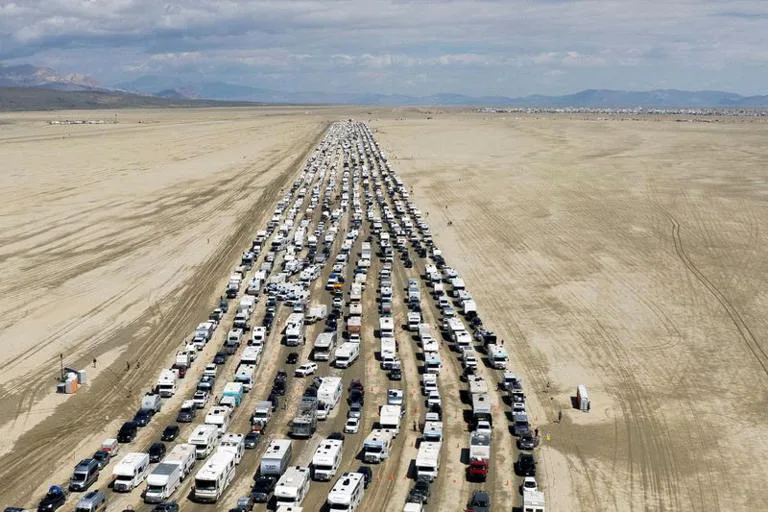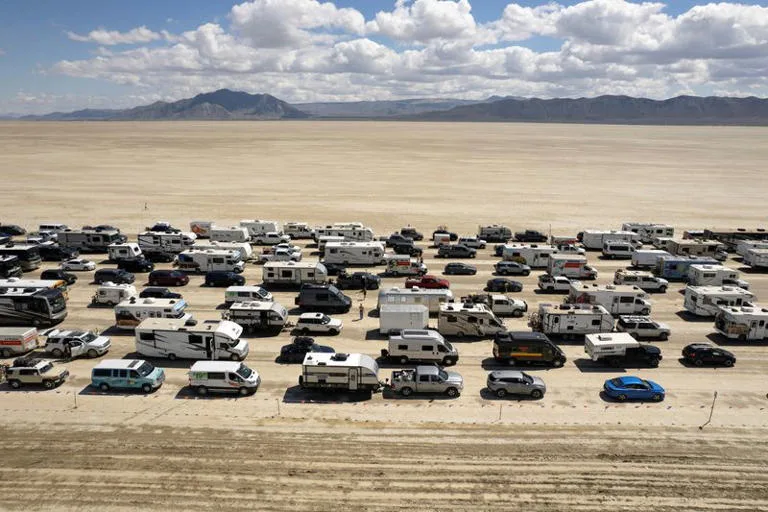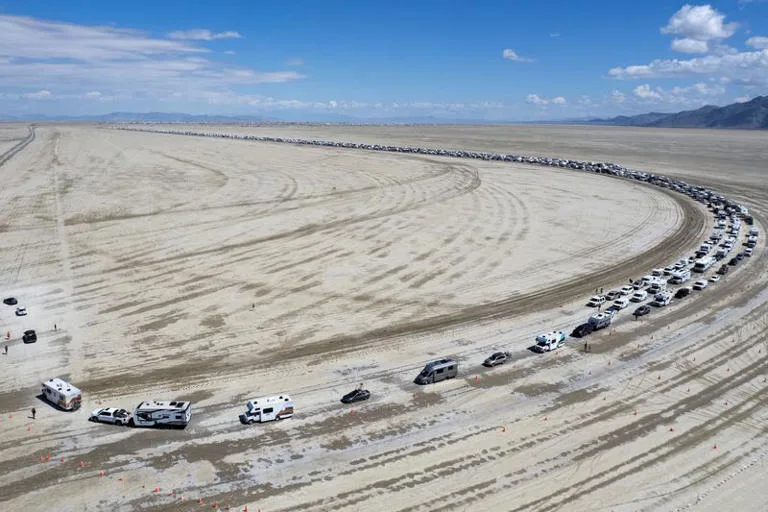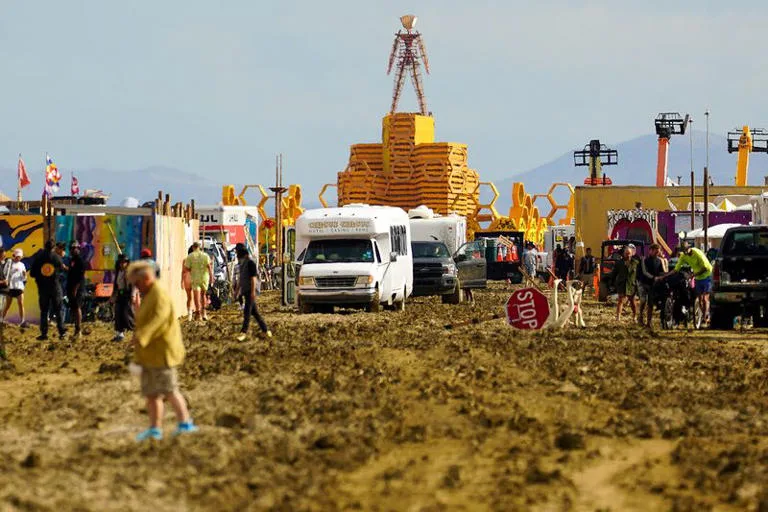Black Rock City, Nevada, Burning Man event organizers finally reopened the road that led out of the remote desert festival, granting tens of thousands of attendees the opportunity to escape after they had been stranded due to mud for several days.
However, many of the 64,000 individuals still present on Monday might opt to stay an additional night to witness the festival’s iconic effigy burn on Monday night, a two-day delay from the original schedule.
Unexpected summer rainfall had turned the weeklong annual counterculture arts festival into a messy ordeal.
Upon the road’s eventual reopening, a lengthy queue of vehicles wound its way through the desert, moving at a slow pace in a massive traffic jam. Event organizers advised drivers to exercise caution and even consider delaying their departure until Tuesday to help alleviate traffic congestion.

Eventually, the traffic congestion evolved into a well-organized departure with ten lanes of recreational vehicles and cars, all seeking the comforts of a hot shower and a clean bed.
The exit route involves navigating a 5-mile (8-km) dirt road leading to the nearest highway. The Burning Man Traffic account on the X social media platform estimated a travel time of 5.5 hours for the “exodus.”
Situated atop the former Lake Lahontan, as described by the U.S. Geological Society, the festival site in Nevada’s Black Rock Desert is a remote location, approximately 15 miles (25 km) from the nearest town and 110 miles (177 km) north of Reno.

For several days, up to 70,000 attendees were instructed to stay put, conserve their food and water supplies, as roads were closed and vehicles were unable to move.
Attendee David Date emphasized the communal effort to survive the challenging situation: “People are taking care of each other. We have food. We have provisions. We have shelter.”
Officials reported one fatality at the event on Sunday, with few details provided, and an investigation underway.
Volunteer Evi Airy described the scene as “apocalyptic,” highlighting the challenges faced by individuals, including children, navigating the cold and muddy conditions.
Even before the official gate opening, some campers began leaving while it was still dark. Stranded vehicles littered the roads within the impromptu Black Rock City, with some blocking lanes horizontally due to loss of control.

The path through the desert to the main gate resembled a graveyard of abandoned cars, posing a challenge to the festival’s principle of “leave no trace” of human activity in the desert.
At one point, event workers offered instructions on how to navigate a “river” formed by the rain, placing cones in an arc with guidelines to maintain a speed of 20 mph (30 kph), yet this route still left vehicles covered in mud. Beyond this final obstacle lay the gravel road leading back to civilization.
The temporary airport serving the festival was also reopened earlier on Monday.
Every year, Burning Man attracts tens of thousands to the Nevada desert, fostering an environment for dancing, art creation, and the experience of a self-sufficient, temporary community of like-minded individuals. Originating in 1986 as a small gathering on a San Francisco beach, the week-long festival has grown to include celebrities and social media influencers, with a regular ticket price of $575.
Traditionally, the festival features a spectacular send-off with the burning of a massive wooden effigy of a man, accompanied by a fireworks display. Originally scheduled for Saturday night, it was rescheduled for Monday night at 9 p.m. PDT (0400 GMT on Tuesday), according to organizers.





